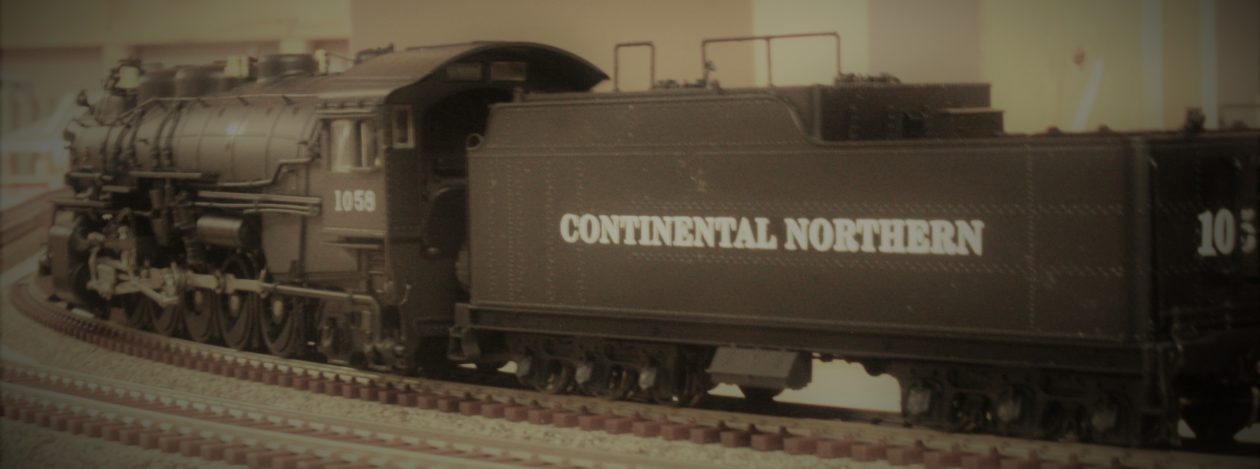This edition of freight car Friday was two weeks in the making, so I apologize about missing last week. Things kind of piled up on me and I ran short of time. That, and this weeks car was not a casual 1 night project.
This week I present to you – a Custom Rail 89′ C&NW Bi-Level Auto Rack, part #4382. There was no notation of which year this was made and a quick check of the “Google” did not reveal anything. In fact I came up with very little info other than it represents a early 80’s auto rack. And they did not seem to be very well received. In fact the quote I came across in a review was as follows: “The Custom Rail cars were based on the old Custom Rail 89′ flat car which the whole kit was not all that user friendly to build and in all my travels I’ve seen few assembled examples so they didn’t seem to go over well.”
Wow.
Had I read that before starting the kit it may still be sitting on the shelf waiting to be built. And, that description was rather accurate in retrospect.
The kit could be built as just an 89′ TOFC flat. It has all the pieces for that. Or you can build it as the intended enclosed auto rack. Additionally as the individual metal panels are applied to the side frames, I believe you could probably build it as an open auto rack as well. Also, since the panels are applied separately the etched metal panels from Plano Model Works might work and give the car a far more “open” feel. In which case you could then place scale cars on the rack and be able to see them inside.
Anyways on to the model. As I said the side panels are separate from the side frames and need to be glued on.



Having done this I ran into the first”fussy” part of the build. You are to glue the second deck on to the inside of the side frame. There are very slight indentations marking where they go. In fact they are so slight that I tried to take a picture of them but they really didn’t show up. My fix, though a bit heavy handed, was to glue a strip of .100 x .100 styrene to the inside just above the indentations. And then glue the deck to the side and the styrene strip.


This was not at all noticeable from the outside.


Next was the base deck of the flat car. The basic assembly is pretty straight forward. There is a stamped flat sheet weight that is glued on to the bottom (it was painted TTX yellow to match the underside) with the center sill glued on over it. The brake equipment is glued into place, although the is no marked location, you just work from the diagram as to where they should be.
The swing couplers are the big hang up. Things are kept pretty tight for prototypical appearances. Meaning that there is a very narrow cutout at the end of the car for coupler movement. Having doubts, I did a basic assembly to make sure there was enough swing for my 30″ radius curves. That is how little swing there is. They worked though I’m not sure how much smaller a radius curve they would work on without modifying the underside of the car. Also, I did quite a bit of sanding/filing to get things to move freely, so that they could get around the curves.
The finished basic flat.

Then it was time to mount the enclosure to the flat. There are only the base of the upright supports that make contact with the deck. Additionally these are close to scale thickness, so the contact surface is very small. It took time and patience as you worked you way down one side then the other.

One side note, I did not install the outside break levers to the side. The diagrams did not match anything on the parts sprues and nothing looked like what was on the Walthers model that I had on hand. So better then throwing something on that looked funny, I left it off.
Then it was time for decals. The decals were made by Microscale. However, the instructions are so poor and blurry that placement was totally unreadable. Luckily I had a Walthers C&NW car that I used for reference.


I needed to add 1 1 /4 ounces to weight to the car and it received Kadee couplers. Metal wheels will have to wait till I can round up 28″ wheels.
It was a bugger to build but the finished car is nice. If you find one around I would recommend it, but know what you’re getting into.
That’s it for this week, till later…
